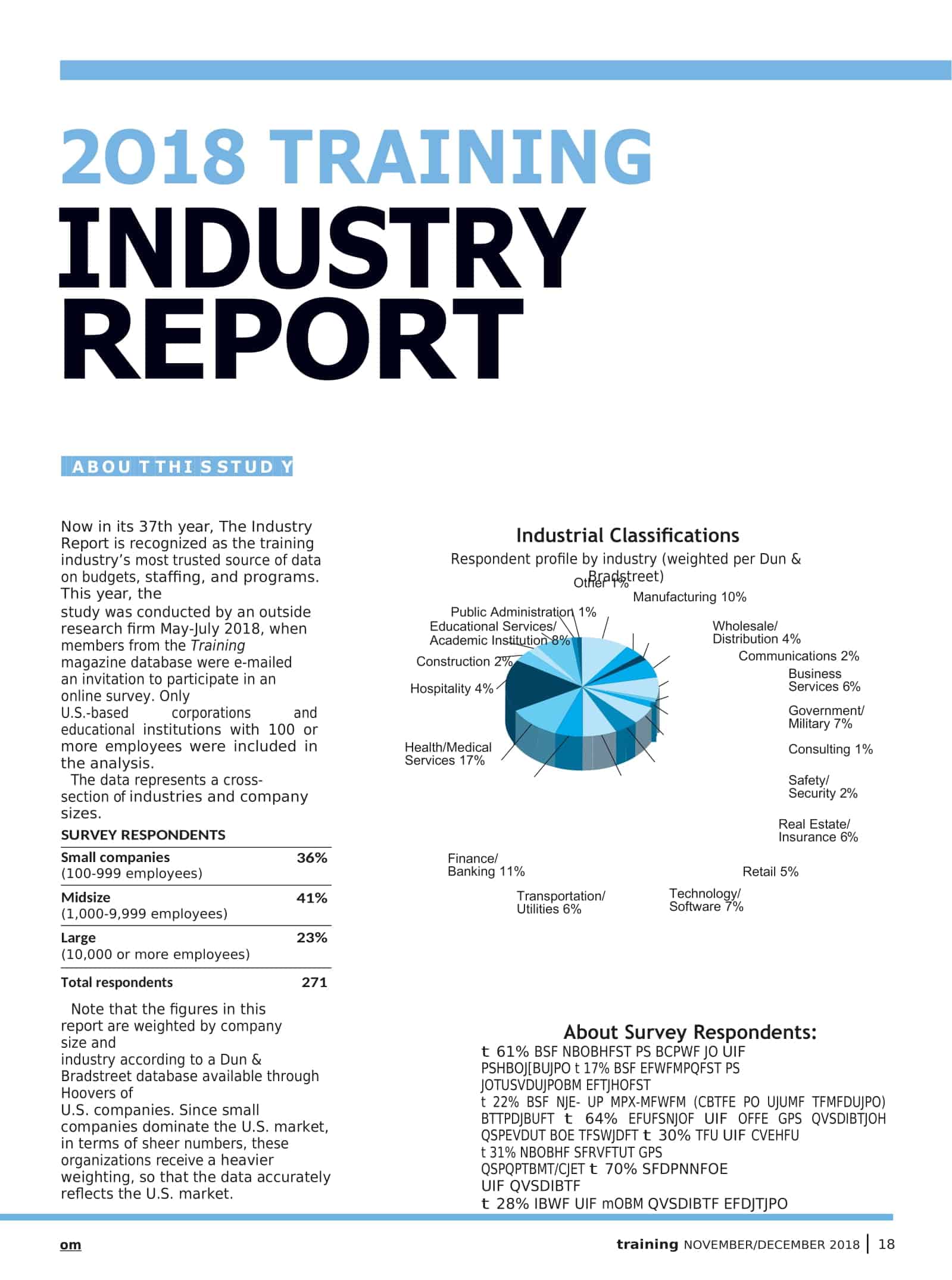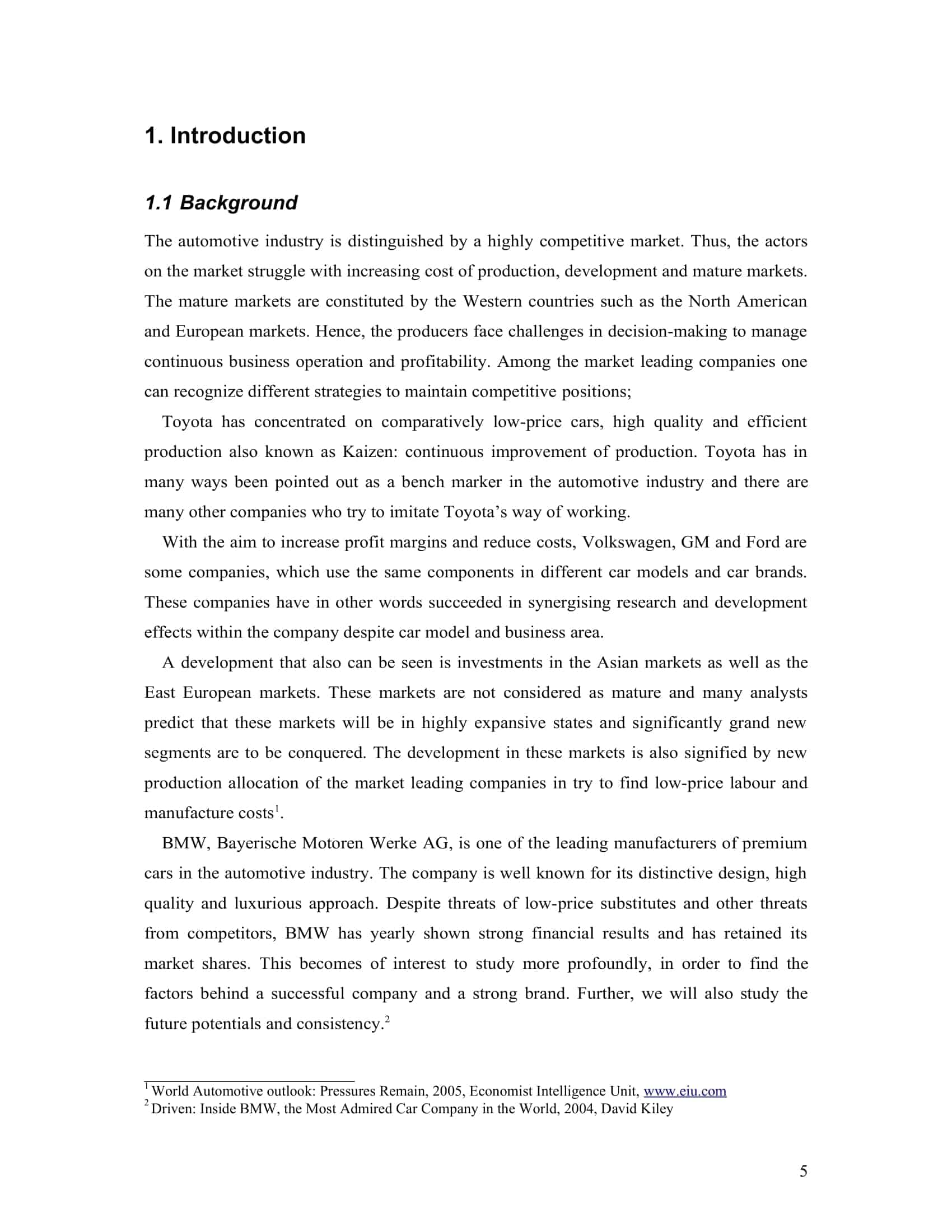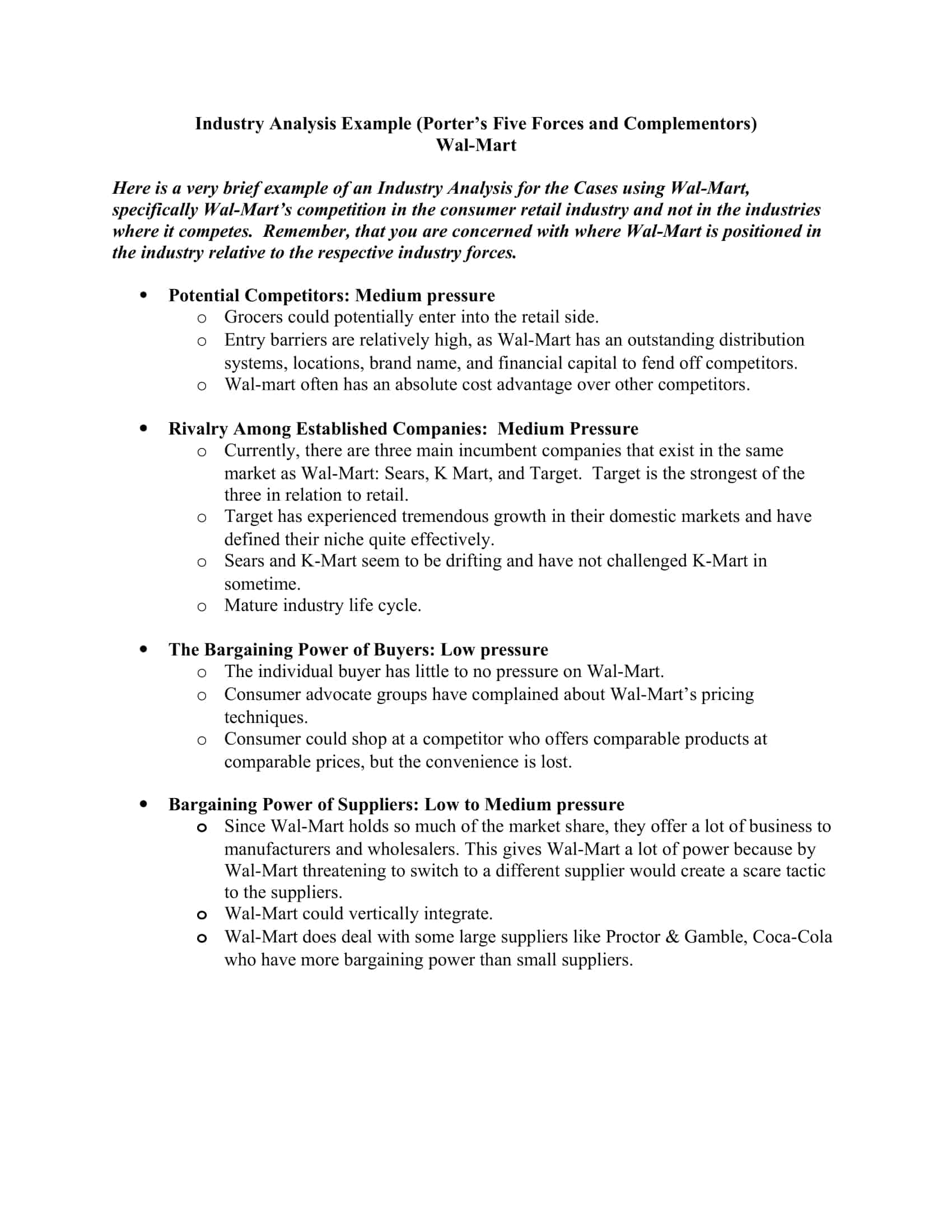The business environment is hardly ever static, which applies to the industries in that environment. There are always elements that are changing, whether they be new technologies, new people, or just changing markets where customers can find different services to purchase from. In any case, it’s important for business owners to make sure that they are up to date with what’s going on in their industries.
Table of Contents
Industry Analysis Templates
Why Is Industry Analysis Important?
![Free Printable Industry Analysis Templates [Excel, Word] 1 Industry Analysis](https://www.typecalendar.com/wp-content/uploads/2022/10/Industry-Analysis.jpg 1024w, https://www.typecalendar.com/wp-content/uploads/2022/10/Industry-Analysis-300x225.jpg 300w, https://www.typecalendar.com/wp-content/uploads/2022/10/Industry-Analysis-768x576.jpg 768w)
Industry analysis is a market assessment tool. It is designed to provide an insight into the analysis of a particular industry. The sector analysis aims to review the economic, political, and market factors that will affect the development of the Industry. Major factors include the situation of suppliers and buyers, the situation of competitors, and the probable situation of new entrants. This analysis is also important in terms of making the decision to enter an industry. This analysis forms the basis of strategic decisions.
We find that some industries perform much better over time than others. However, the rating of industries according to their performance cannot be a basic indicator for future periods. An industry that has performed poorly in the past could be a star in the future. With industry analysis, analyzes are made on what kind of strategy a company should follow in the market and in which areas it should concentrate its investments.
What are some examples of industry analysis?
This analysis is also important in terms of deciding to enter an industry. This analysis forms the basis of strategic decisions.
According to the Five Forces Analysis developed by Michael Porter, five forces need to be examined to analyze the competitive conditions in an industry.
1. Competition Among Current Competitors in the Industry; The current competitive structure in the sector in which the business operates,
2. Potential Entry Threat; threats posed by businesses with the potential to enter the Industry,
3. Threat of Substitute Goods; Threats on the business created by substitute products other than the sector in which they operate,
4. Bargaining Power of Buyers; The pressure created by the business on the business and its ability to steer the industry, thanks to the bargaining power of its customers,
5. Bargaining Power of Suppliers; equipment, raw materials, semi-finished products, operating materials, etc., needed by the enterprise. It can be listed as the effect of the suppliers from which it buys the resources on the business and the power to steer the sector.
According to this analysis, strong competitive factors are a threat due to the inability of the business to price as it wishes; on the other hand, weak competition factors will provide new opportunities for the business as it will offer more profit opportunities. In other words, the stronger any of these factors, the lower the ability of the enterprise to raise prices and the lower the profitability of the enterprise; the weaker these factors are, the higher the ability of the enterprise to increase prices and more profit.
The potential entry threat, the threat of substitute goods, the threat of existing competitors, horizontal competition, and the bargaining power of buyers and suppliers are the elements of vertical competition.
1. POWER – Potential Entry Threat
Threats and Hazards Created by New Entrants to the Industry (barriers to entry) Profitable markets may attract new companies. As a result, there may be multiple entries into the market. This will reduce the profitability of all companies in the sector. High profits will decline to zero unless the authorities put obstacles in place. (perfect competition) Most attractive are the high barriers to entry and low barriers to exit so that new firms can enter and underperforming firms can exit easily.
- Entry Barriers
- Economies of Scale
- Having Product Differences
- Capital Requirement
- Transition Costs
- Distribution channels
- Cost Disadvantages
- Government Policies
- Economy of scale means that the unit cost of a product decreases as the absolute volume of production per period increases. Economies of scale can reverse the firm that will enter the sector in two ways. The enterprise attempting to enter the sector on a large scale cannot afford to receive great reactions from existing companies. The business that prefers to enter on a small scale cannot afford the cost disadvantage. Who do economies of scale protect?
- Having Product Differences If the companies in the Industry have produced privileged products and created differentiation in the Industry, it will be possible for new entrants to enter the industry in this way, that is, to create a difference by following a differentiation strategy. The customer may remain loyal to some products and brands and identify with himself. Baby care products, cosmetics, investment banking
- Capital Needs If the new entrants need high amounts of fixed capital to invest in an industry, and if machinery, equipment, and other tools and equipment are needed for marketing and distribution, not every firm can easily find this money and dare to enter the Industry. Providing loans, leasing technology, advertising, and research and development activities may require a large amount of capital that the enterprise cannot provide—Information Technologies, Mining, Cosmetics, Pharmaceuticals, etc.
- Transition Costs A barrier to entry is created by the existence of one-time costs faced by the buyer switching from one supplier’s product to another supplier’s product. Changing raw materials and intermediate goods in industrial products sometimes involves changes in machinery, equipment, electrical components, etc. can cause problems. It may cause interruption or disruption of production for a while or deterioration of quality. For these reasons, buyers do not change their old companies and can remain loyal to them (solution bottles)
- Distribution Channels If firms in the Industry dominate distribution channels and cause difficulties for new entrants, the number of new entrants will be affected—supermarket, beer, ice cream, newspaper, etc.
- Cost (Disadvantages) Branded product technology or low-cost product design strength Easy access to raw materials Convenient locations Government subsidies Learning curve
- Government Policies The government can limit or completely block entry into the Industry with controls such as licensing difficulties and restrictions on access to raw materials. On the contrary, by following a policy, the government may encourage entry to some sectors and provide incentive credits, new investment facilities, and tax reductions. Banking and insurance industry, pollution controls
2. POWER – Bargaining Power of Suppliers
Equipment, raw materials, semi-finished products, operating materials, etc., needed by the enterprise. It can be listed as the effect of the suppliers from which it buys the resources on the business and the power to steer the sector.
Vendors (suppliers) are individuals or businesses that provide all kinds of inputs, such as raw materials, auxiliary materials, semi-finished products, and energy required to produce goods and services in an industry.
The increase in the bargaining power of the sellers may adversely affect the costs, inputs, and quality of the final products, production quantities, and delivery times of the enterprises operating in the Industry.
Firms that enter the market can create changes and uneasiness in the market structure and competition. The bargaining power of the suppliers is also defined as the input market. How many suppliers are there for raw materials, parts, labor, and services (such as expertise)?
- Determinants of Sellers’ Bargaining Power
- Too many sales
- No substitute products
- The importance of the sector
- Importance for buyers
- High transition costs and product diversity
- Forward integration threats
3. POWER- Threat of Substitute Goods
Threats of substitutes created by substitute products other than the sector in which they operate (threat of substitutes)
- Buyer’s tendency to substitute product
- price performance of the substitute product
- Buyer’s replacement cost –
- The degree of persuasion of product differentiation
- Number of substitute products in the market
- Ease of use of the replacement product. For example, knowledge-based products can easily replace substance-based products in the market.
- Limited product -Able to amortize quality
if substitute products are cheaper or the same in price but better in other respects (aesthetics, quality, durability)
If buyers can easily switch to this product when the substitute products become attractive in terms of various qualities (if the damage and costs of switching to a substitute product are minimal)
If there are sociopsychological trends such as increasing the attractiveness of substitute products, being fashionable in the market, and attracting the attention of buyers
The competition for quality and low-cost substitute products affects (negatively) the strategic advantages of enterprises. Therefore, hazards or risks should be analyzed as substitute products begin to be produced.
Identifying substitute products is the search for other products that will fulfill the same function as the product in the Industry. (Sometimes, this can be a complex task that requires research into different business areas).
Ex; Bus companies trying to compete with airline companies
4. POWER – Bargaining Power of Buyers;
the pressure created by the business on the business thanks to the bargaining power of its customers and its ability to steer the Industry.
- Determinants of Buyers’ Bargaining Power
- Too much intake
- Low transition costs
- Whether the products received are standardized or undifferentiated.
- Serious backward integration threats
- Knowledge of the market and other businesses
- Profits and interests
- Buyer’s price sensitivity
- Buyer volume Availability of existing substitutes
- Differentiating advantages of industrial products RFM analysis
5. POWER- Competition Among Current Competitors in the Industry
The current competitive structure in the business’s sector (industry rivalry). For most industries, the intensity of competition is an important determinant of the competitiveness of the Industry.
If a business does not know its competitors, their activities in the market, and the strategies they follow, it does not make much sense to know its own products and activities very well.
The business’s competitors may be firms that produce similar goods and services, as well as firms that produce substitute products.
Price competition, Advertising wars, Introducing a new product to the market, Extended customer service or warranties, etc., may come up.
How do you create an industry analysis?
To perform and use industry analysis, follow these steps:
1. Understand why you are doing industry analysis
The first step in doing industry analysis is to define your goals. Understanding why you are doing industry analysis makes it easier to choose the method or methods to use, as you can use these models simultaneously to build a complete understanding. With a goal in mind, the right industry analysis method can help you understand your business in the Industry and create a plan for growth and improvement.
2. Build a comprehensive understanding of the Industry
Using one or all of the above methods, you want to evaluate external and internal factors that may affect your success and ability to grow. Using these models allows you to consider all the factors that affect your business. Creating a visual representation of this information can also be helpful, as it allows you to conceptualize and communicate information to your team and partners. These are some aspects of building a comprehensive understanding of the Industry:
Do market research to identify an ideal customer: Using market research, you can understand external factors such as trends and lifestyle changes, among other factors such as your buyer’s bargaining power.
Evaluating your competition in the Industry: Evaluating your competitor’s threats and opportunities and their strengths and weaknesses allows you to leverage your own distinct talents and succeed in the Industry.
Gather data on internal and external factors: You may want to understand how government regulations, social-demographic behavior, and technological advances can help or hinder your success. Having a comprehensive understanding of these external factors and internal factors such as your own strengths and weaknesses creates a comprehensive knowledge of how your business is doing in the Industry.
3. Analyze the internal and external data you collect
Once you have your data, you may want to hire or consult with data analysts to make sense of the data. Which results are most valuable to you depends on your particular strengths and weaknesses and your Industry. You can choose a focus, such as determining how demographic changes will affect your buyer’s bargaining power or how supplier prices will change the threat of new competition in the market.
4. Build a strategy using internal and external industry data
Using your data and forecasts, you can make actionable plans for how you can take advantage of market changes or avoid the negative effects of external factors. This could mean using new technology to appeal to a younger generation or creating a loyalty program to reduce your buyer’s bargaining power. Considering all supply chain issues, internal and external threats and opportunities allow you to plan for realizing your company’s potential.
FAQs
Is there a SWOT template in Word?
Yes, Microsoft Word provides various SWOT analysis templates you can download to visualize a helpful framework categorizing organizational Strengths, Weaknesses, Opportunities and Threats during strategic planning exercises aiming to uncover growth areas or risks requiring attention.
How do I write a SWOT analysis?
When writing up a SWOT analysis, describe factors within each quadrant succinctly using bullet points or short sentences rather than paragraphs: Strengths – Internal positives like expertise Weaknesses – Flaws needing improvement
Opportunities – External potential advantages Threats – External obstacles or risks
How do I create a SWOT analysis template?
To create a SWOT template: Launch Word, PowerPoint or Google Docs, structure with 4 boxes labeled Strengths, Weaknesses, Opportunities and Threats. Below each frame leave white space for compiling related bulleted lists assessing different elements like financials, operations, marketing etc. matching them into appropriate categories.
What are the four parts of a SWOT analysis?
The four components of a SWOT analysis are:
Strengths – Advantages, current capabilities Weaknesses – Gaps or flaws to address Opportunities – Promising external factors Threats – Risks or obstacles posed externally
Is there a SWOT template in Google Docs?
In Google Docs, access premade SWOT analysis templates by: Opening blank document, selecting Template Gallery to view options, searching “SWOT” and clicking to apply desired option with predefined tableau framing designated, editable sections helping structure identified elements.
Is there a SWOT template in PowerPoint?
Yes, within PowerPoint under New Slide options a variety of pre-built SWOT analysis templates exist to choose from, offering quick drop-in two-by-two SWOT grids with four editable sections framing space to detail relevant discoveries generated during assessments.
What is a SWOT analysis in one word?
If describing a SWOT analysis in just one word, it would be “evaluation” as SWOT frameworks inventory and appraise factors categorized across internal strengths/weaknesses dimensions and external opportunities/threats perspectives producing insights.
What are the 5 steps in writing a good SWOT analysis?
The key steps for effective written SWOT analysis are:
- Establish objectives guiding discoveries made
- Set parameters like departments or initiatives assessed
- Categorize factors accurately into appropriate SWOT quadrants
- Summarize concisely using consistent parallel structure per section
- Maintain objectivity using evidence-based determinations
What are the 5 elements of SWOT analysis?
The 5 SWOT elements analyzing are:
- Strengths – Foundational benefits
- Weaknesses – Internal gaps needing addressed
- Technology – Infrastructure advantages/deficits
- Opportunities – External potential advantages
- Threats – External obstacles undermining efforts







































![Free Printable Credit Card Authorization Form Templates [PDF, Word, Excel] 2 Credit Card Authorization Form](https://www.typecalendar.com/wp-content/uploads/2023/06/Credit-Card-Authorization-Form-150x150.jpg)
![Free Printable Stock Ledger Templates [Excel,PDF, Word] 3 Stock Ledger](https://www.typecalendar.com/wp-content/uploads/2023/08/Stock-Ledger-150x150.jpg)
![Free Printable Financial Projections Templates [Excel, PDF] 4 Financial Projection](https://www.typecalendar.com/wp-content/uploads/2023/05/Financial-Projection-1-150x150.jpg)
